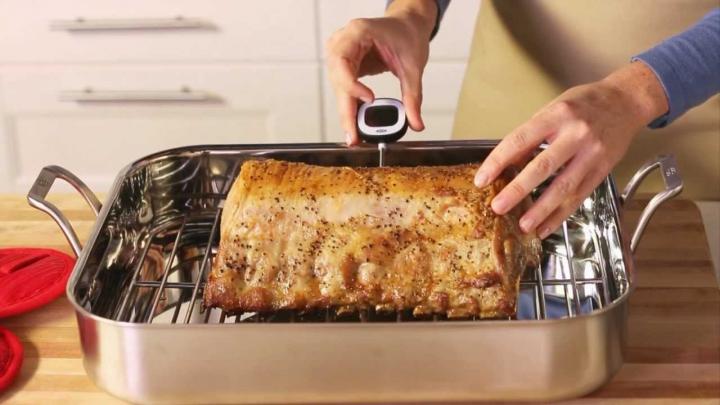
A Chart of Minimum Internal Temperatures for Beef, Poultry, and Other Meats
ADVERTISEMENT
I use a thermometer in every meat item I cook for both food safety and the fact that a slight difference in food weight, humidity, or room Temperature will make a big change in cooking time. There are many oven and grill thermometers with probes that you can leave in the food while cooking. I have had five with different brands and price points and they all work great.
I started using a Meat thermometer when I realized that bacterias remain in a cooked food with the wrong temperature, finally, I have found amazing Thermometer very often and very satisfied with it
°C to °F multiply by 9 divide by 5 then add 32.
°F to °C subtract 32 then multiply by 5 and divide by 9.
simples!
I have a beautiful piece of middle topside of beef 2,5kg,,, I have a good quality oven with a built in theromoeter probe. The book advises to set the thermometer at 65 for medium rare cooking but what I get confused about is, when I put the probe in and plug it in I can select 65 but dont understand if I have to set the oven temperature dial as well, if I do, do I set it at normal 180 or do I have no need to set it at all.
thanks
We highly suggest that you consult your manual. Otherwise, contact the company that made your oven.
Any suggestion where can i buy this? or is this available at amazon? i need this. thank you and good day. !
Sorry, we don’t sell this product. Best bet is with Amazon!
Thank you for a straight answer. I recommend this site to everyone. You give answers and I love that. I didn't have to sit here and try to figure on long It would he to cook my 33.35 lbs turkey...yum yum
I am doing bone broth and have a soup cooker that seems to cook things on the lowest setting below the safety level. Do you think it would be dangerous if the temperature was 156F for about four hours? When I put the bones in, I poured in boiling water first. The ingredients are really expensive and would hate to throw it out!
How do you guys work with the imperial system?
Its so antiquated and has no logic.
I too would like to see a temperature scale in Celsius.
While you are at it can you change your date system as well? :-)
Thanks from Australia.









